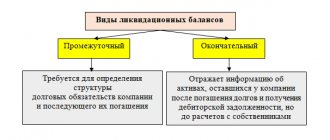Various companies are periodically forced to raise borrowed funds for their further development. There are a number of rules for posting loan funds and interest on them in reporting documents. Interest charges are part of operating expenses. They are carried out using the entry - debit 91/2, credit 66. Payment of debt and transfer of interest is reflected in the documents by posting debit 66, credit 51 (52, 53). When preparing financial statements, the accountant must know whether it is necessary to convert all long-term loans into short-term ones.
Loan repayment period
If the debt is paid partially and monthly, the corresponding entry reflects this transaction also monthly for the specified amount. All debts are reflected in the financial statements taking into account their repayment period. They are conventionally divided into:
- short-term (with a working period of up to 12 months);
- long-term loans.
In the process of work, an accountant often has a question about the possibility of transferring borrowed funds from the category of long-term to short-term liabilities. This happens, for example, if the commitment period is 366 days.
In what cases is loan transfer acceptable?
According to PBUs regulating accounting activities (in this case PBU15/01) and based on the accounting policies adopted by the enterprise, it is possible to transfer long-term liabilities to the category of short-term loans. In this case, this operation is performed exactly one year before the repayment of the principal amount of the debt.
In addition, it is possible to account for long-term loan funds, the repayment period of which is more than one year, until the end of the specified period as part of long-term liabilities. Experts often recommend carrying out separate accounting, based on the recommendations of the Ministry of Finance that such an operation is not provided for in the instructions for the chart of accounts.
For separate accounting, you should open a subaccount to the main account 67. This is advisable for accounting for long-term loan funds, the repayment period of which is less than a year.
Postings when transferring loans to the short-term category
In the company's documents, account 66 is used to account for short-term liabilities, and 67 for long-term liabilities. The category of short-term loans includes all those liabilities that must be repaid no later than 1 year. All other debts are accounted for in account 67.
Interest payments accrued on loans also belong to account 66, but they are accounted for separately from the principal amount of the debt.
Analytical accounting involves the classification of obligations not only depending on repayment terms, but also by type of credit institutions and other lenders.
The following scheme for organizing synthetic accounts is used:
- by type of funds received, a first-level subaccount is used (66.x/67.x);
- depending on specific partners or the level of budget funding, a second-level subaccount is used (66x.x/67x.x);
- the division of individual loans for each lender is reflected in the third level subaccounts (66.х.х.х/67х.х.х).
In addition, when accounting for long-term liabilities, two working schemes are used:
- account 67 until the end of the debt repayment period;
- transfer to account 66 at the time when there are less than 365 days left until the payment of the obligation.
Important! It is imperative to reflect the chosen method of accounting for all long-term debts in the company’s accounting policies.
Short-term and long-term loans - accounting in accounting
Interest accrued on the loan is reflected using entry D91/2 K66, that is, it is also included in operating expenses.
The return of loan money and the payment of interest is reflected using entry D66 K51 (50, 52). If an organization repays its debt in installments every month, then this entry is made monthly for the repayment amount. Postings for short-term loans (account 66): Debit Credit Name of transaction 50 (51, 52) 66 Short-term loan received 91/2 66 Interest payable under the loan agreement accrued 66 91/1 Positive exchange rate difference and interest in foreign currency accrued 91/2 66 Negative exchange rate differences and interest in foreign currency were accrued.
Such transfer of urgent short-term and (or) long-term debt on received loans and credits into overdue is carried out by the borrower organization the next day after the expiration of the term established by the agreement for repayment of the principal amount of the debt (Table 2). To transfer urgent debt into overdue debt, it is necessary to properly organize analytical accounting for synthetic accounts 66 “Settlements for short-term loans and borrowings” and 67 “Settlements for long-term loans and borrowings” in the context of subaccounts “Settlements for urgent debt” and “Settlements for overdue debts” . On the corresponding subaccount of account 66 or 67, overdue debt must be taken into account until it is fully repaid or until it is written off as a debt with an expired statute of limitations. According to clause
Attention Additional expenses are included in operating expenses 66 50 (51, 52) Repayment of short-term loans Accounting for long-term loans (entries to account 67) Long-term loans are usually taken out by an organization to update fixed assets, acquire intangible assets, modernize, reconstruct, expand production, that is These are long-term investments that will not pay off quickly. They are taken, as a rule, for 5-10 years. Credit institutions issue long-term loans only to stable operating organizations with a stable financial position. It is problematic for a young enterprise to obtain a long-term loan; banks take issuing such loans very seriously. Interest on long-term loans is usually noticeably lower than interest on short-term loans, but it is also much more difficult to obtain. Review of the application and registration will take much longer. At the end of the year, the accountant checked how much of the long-term debt as of the reporting date (December 31, 2014) had become short-term, given that six months had passed since the loans were received. The total remaining repayment period is equal to: - for a loan in the amount of 250,000 rubles, issued for a year and a half (until January 1, 2016), - a year. The loan must be recognized as short-term; - for a loan in the amount of 300,000 rubles issued for two years (until July 1, 2016) - one and a half years. The loan continues to be long-term. On December 31, 2014, the accountant made the following entry: DEBIT 67 subaccount “Calculations for the principal amount of the loan” CREDIT 67 “Calculations for the principal amount of the loan, the repayment period of which after the reporting date is no more than 12 months” - 250,000 rubles. — reflects the change in loan status.
How to reflect the transfer of long-term liabilities to short-term ones in accounting documents?
At the first stage of raising borrowed funds, the accountant should decide on their posting based on the period of repayment of the debt incurred. Either account 66 (for debts with a payment term of less than a year) or 67 is used.
When accounting for debts whose repayment period is limited to 3, 6 or 12 months, account 66 is used. We should not forget to reflect interest payments on these obligations. To indicate the amount of debt, there is a subaccount to account 66 and an additional subaccount for calculating interest.
Raising borrowed funds for a period of 3 or 5 years is reflected in account 67. An additional sub-account is used to calculate interest (the scheme is similar to short-term loans). In addition to account 67, two corresponding sub-accounts should be created.
The period of use of borrowed funds is inevitably reduced. Accordingly, the category of loans based on their repayment period must sooner or later change. But there is no need to display this circumstance in accounting documents. Moreover, such an operation is not provided for by accounting instructions.
To solve this situation, experts recommend creating a separate sub-account in addition to account 67. It will be used directly to record settlements of long-term liabilities.
How to convert short-term loans into long-term ones
4 Before signing a new contract or additional agreement, draw up a new monthly debt repayment schedule.
Draw up a schedule taking into account the new conditions in force in the credit institution at the time of signing the agreement. 5 Transfer all data on the loan from debit 66 to debit 67 and from credit 51 to credit 52. Using the cash entry, enter the expense for credit 50.
6 If all payments on a short-term loan were made on time, then the loan is not considered overdue and transferring it to a long-term loan does not carry any penalties. If payments are overdue, you have the right to charge and collect a penalty in the amount of 1/300 of the remaining loan amount for each day overdue. 7 The transfer of loans from short-term to long-term is carried out not only by mutual agreement between the client and the creditor, but also by court decision, if the client applied there with a statement of insolvency.
In this case, debt restructuring can be formalized for a period of 5 years. This is most often done if the creditor is unable to receive the client’s property as payment or seize bank accounts due to the fact that the client simply has nothing. Is the advice useful? Yes No Related articles:
- How to reflect a loan in accounting
- How to write off a loan from the founder
- How to extend a loan agreement
Account 66 “Settlements for short-term loans and borrowings”
Moreover, if bonds are placed at a price exceeding their nominal value, then entries are made in the debit of account 51 “Current accounts”, etc.
in correspondence with accounts 66 “Settlements for short-term loans and borrowings” (at the par value of bonds) and 98 “Deferred income” (for the amount of the excess of the bond placement price over their par value). The amount allocated to account 98 “Deferred income” is written off evenly during the circulation period of the bonds to account 91 “Other income and expenses”.
We recommend reading: How to check if there is unused vacation for previous years
If bonds are placed at a price below their par value, then the difference between the placement price and the par value of the bonds is added evenly during the period of circulation of the bonds from the credit of account 66 “Settlements on short-term loans and borrowings” to the debit of account 91 “Other income and expenses”. Interest payable on loans and borrowings received is reflected in the credit of account 66 “Settlements on short-term loans and borrowings” in correspondence with the debit of account 91 “Other income and expenses”. Accrued interest amounts are accounted for separately.
For the amounts of repaid loans and borrowings, account 66 “Settlements for short-term loans and borrowings” is debited in correspondence with the cash accounts. Credits and borrowings not paid on time are accounted for separately.
Analytical accounting of short-term loans and borrowings is carried out by type of loans and borrowings, credit organizations and other lenders who provided them.
On a separate sub-account to account 66 “Settlements for short-term
How to properly prepare reports?
According to Order of the Ministry of Finance No. 66 dated 07/02/2010, all debts and assets when accounting are necessarily divided by maturity.
In the event that long-term loans are transferred to the short-term category during their repayment period, they must remain in the same account. However, they should be shown on the balance sheet as part of other short-term debts. This rule also applies to interest payments.
Particular attention must be paid to interest payments accrued but not yet transferred to the lender. Here you need to take into account the payment period. If it does not exceed a calendar year (for example, the loan agreement provides for monthly transfer of interest), then these payments are included in short-term liabilities.
In other words, the balance of account 67 is not always included in full as part of long-term payments, but is divided based on specific circumstances.
Important! For tax reporting, the principal amount of borrowed funds does not matter, since it is not a factor generating the income of the enterprise. As for interest payments, if necessary, they should be recognized as an expense.
Indicators of the financial condition of the enterprise
| Index | Meaning of indicators | ||
| without converting long-term debt into short-term | when converting long-term debt into short-term | Recommended value | |
| Liquidity indicators | |||
| Absolute liquidity ratio | 0,13 | 0,11 | 0,2 — 0,3 |
| Intermediate liquidity ratio | 0,88 | 0,75 | 0,7 — 1 |
| Current ratio | 3,48 | 2,99 | 1,5 — 2 |
| Financial stability indicators | |||
| Own working capital, thousand rubles. | 178 778 | 166 778 | |
| Provision ratio of own working capital | 0,71 | 0,66 | 0,1 |
| Equity agility ratio | 0,75 | 0,70 | 0,2 — 0,5 |
| Autonomy coefficient | 0,74 | 0,74 | >=0,5 |
| Financial stability ratio | 0,78 | 0,74 | 0,8 — 0,9 |
A change in the procedure for accounting and reporting of accounts payable leads to a decrease in the values of liquidity indicators and financial stability of the enterprise. With a small amount of transferred long-term debt, the change in indicators is not so significant. However, with large amounts of long-term debt, the analyzed indicators are reduced significantly.
Based on the results of the comparative analysis, it can be stated that a commercial enterprise as a subject of market relations is not interested in introducing this provision into accounting practice, since it causes a decrease in the values of indicators characterizing its financial condition and investment attractiveness, and increases the risk of loss of creditors. At the same time, from the point of view of external users of financial statements, it is justified and necessary. Indicators calculated based on the balance sheet data, taking into account the timing of repayment of accounts payable, more accurately characterize the financial position of the enterprise under study. The information value of financial statements increases, which is determined by the ability of the reporting information to influence the adoption of certain management decisions. For lenders, the risk of non-repayment of provided credits (loans) is reduced, since it becomes possible to objectively assess the solvency of a potential borrower.
At the same time, the requirement of Art. 13 of the Federal Law of December 6, 2011 N 402-FZ “On Accounting” to the extent that accounting (financial) statements must give a reliable picture of the financial position of an economic entity as of the reporting date, the financial result of its activities and cash flows for the reporting period necessary for users of these reports to make economic decisions.
The introduction into the accounting practice of an agricultural enterprise of the provision on the transfer of long-term debt on credits and loans to short-term debts will require the implementation of certain organizational and methodological measures:
- consolidating the provision on the transfer of long-term debt to short-term debt in the order on the accounting policy of the enterprise;
- allocation of a system of subaccounts to the account. 66 “Settlements for short-term loans and borrowings” and 67 “Settlements for long-term loans and borrowings” in order to ensure separate accounting of the principal amount of debt on loans (borrowings) and interest on them;
- determining the working correspondence of accounts for the transfer of the principal amount of debt and accrued interest on borrowed funds from long-term debt to short-term debt;
- development and approval of the form of an accounting certificate on the registration of the relevant fact of economic life.
Information on the transfer of long-term debt on loans and borrowings to short-term debt must be disclosed in the notes to the balance sheet.
Borrowing and credit costs
The list of expenses associated with the fulfillment of obligations under received loans and credits, the new PBU 15/08 includes:
- interest due to the lender (creditor) (including interest (discount) on bills and bonds);
- additional expenses.
Please note that such type of expenses as exchange rate differences on interest are excluded. Why is this done? Currently, there is an accounting regulation “Accounting for assets and liabilities, the value of which is expressed in foreign currency” (PBU 3/2006). It talks in detail about the procedure for recording various exchange rate differences in accounting. Accordingly, there is now no need to duplicate these norms in the PBU dedicated to the accounting of loans and credits.
As for additional expenses on loans, these include expenses that are directly related to obtaining loans, for example, consulting services, funds spent on the examination of contracts, etc. 13. In the new PBU, their composition has become less detailed, but, in essence, has not undergone any changes. At the same time, the condition that the list of these costs is open was preserved.
It should also be noted that according to PBU 15/01, the debt on loans (credits) received was shown taking into account interest. This rule contradicts the chart of accounts, which contains the exact opposite requirement that accrued interest is accounted for separately, that is, in separate sub-accounts. Now this contradiction has been eliminated. The new PBU 15/2008 clearly states that interest on loans is reflected in accounting separately from the principal amount of the obligation for the loan received.
How to reflect the transfer of a loan into short-term debt in reporting documents?
It is important to remember that this procedure is not reflected in synthetic accounting accounts. You should proceed according to this principle, in accordance with the rules and job descriptions:
- If there are analytical accounts, it is necessary to make the corresponding internal entries on the analytical accounts of debts of both categories.
- On the balance sheet, debt that falls into the short-term category according to the repayment period (but is accounted for in account 67) is reflected in the category of short-term liabilities.
- If the reporting policy provides for the form of explanations, then in the statement of financial results and balance sheet this point must be reflected in the appropriate column (transfer from long-term debt). At the same time, data on long-term debt available at the end of the reporting period is reduced, and in the category of short-term liabilities it is increased.
Thus, the solution to the issue must be approached taking into account the reporting policy applied at this enterprise. There is no need to specifically transfer a loan to the short-term category when the repayment period is naturally shortened. Moreover, such an operation will not be entirely correct from the point of view of the rules for keeping records and drawing up reporting documentation.
Is it possible to transfer short-term loans to the long-term category?
Such an operation is not provided for, but is permissible in a situation where the parties have reached such an agreement and restructured accounts payable. Accordingly, the loan repayment period has become longer. It is more than 12 months.
This must be reflected in the documentation, in accordance with the basic rules of reporting:
- You will need to make the necessary notes on analytical accounts, provided that the enterprise has analytical accounting. If there is no analytical accounting, then the transfer of debt from one category to another is reflected in the debit of account 66 and in the credit of account 67. The basis for performing this operation is a change in the terms of the loan agreement.
- When preparing the balance sheet, funds are shown in the long-term category, since they are now long-term liabilities.
- The operation of transferring borrowed funds must be indicated in the explanations to the report on the results of the enterprise’s work and the balance sheet. Naturally, the size of long-term liabilities increases, and short-term liabilities decrease by the same amount.
In this situation, the same principle of accounting entries applies as when changing the repayment period of long-term loans.
Long-term and short-term liabilities of the enterprise
To resolve financial issues, many companies attract internal and third-party sources of financing. In the second case, at a certain stage the company may have so-called long-term and short-term obligations.
If they exist, one of the main tasks of a company or enterprise is timely repayment of debts, while the funds received are not the property of the company, it simply uses them until the time for their repayment comes.
Signs of short-term liabilities
This type of loan has the following features:
- The total amount of borrowed funds largely determines the duration of the enterprise's production cycle. The more significant the short-term obligations of a business entity, the smaller amounts it will attract to use to pay current expenses in the course of the company's operation.
- The company's short-term liabilities replace a free source of borrowed capital.
- The total amount of debt is often determined by how successfully the company sells its products. An actively operating enterprise is forced to constantly spend money, so it often requires borrowed funds.
- When preparing the financial statements of a company, it is worth remembering that short-term liabilities on the balance sheet are “Liabilities”.
- In some cases, debts that are less than 12 months old can be paid off using current assets. These financial resources are used in the planned activities of a business entity, and in order to use them to pay off debts, they must be credited no later than 12 months from the date the debt was created.
- The amount of this type of debt depends on the frequency of payments on it, which makes it possible to quickly work with sources of funds when carrying out production activities.
- The size of short-term liabilities is difficult to estimate in the future; this situation arises from the impossibility of accurately calculating the amount of amounts that form the basis of debt obligations.
Calculation of the coefficient and its meaning
Described debt is expressed using a ratio that shows the proportion of liabilities in relation to total debt. To calculate this coefficient, use the following formula:
Kkz = Ko: (Ko + Do)
Where
- Kkz is the coefficient that needs to be calculated,
- Ko – short-term,
- Until – long-term.
obligations used:
The indicator that will be obtained after the operations performed shows how dependent the business entity is on borrowed financial injections over a 12-month period. If the short-term liabilities ratio is high, this indicates that the company is solvent, respectable and reliable.
Short-term liabilities and their components
When recording debt obligations, all borrowed funds of the company must be taken into account. The company's current liabilities consist of the following components:
- Conditional payment.
- Funds that were borrowed for a long period of time, but part of them must be returned within a period not exceeding a 12-month period.
- Accounts payable.
- Income that the company did not earn.
- Debt obligations on demand.
- Deposits placed for a 12-month period and which will be returned.
- Tax deductions.
- Dividends to be paid to shareholders.
- Loans on bills of exchange with maturities of less than 12 months.
- Debts requiring repayment no later than 12 months.
Types of short-term liabilities
Short-term liabilities can be divided into several subtypes:
- Operating rooms. This type of debt includes: rent payments, advance payments received by a business entity, taxes, current payments to the budget. The group of operational obligations includes the company's debts for materials received that will be used in production, as well as accrued but not yet paid salaries to the company's employees.
- Debts subject to repayment no later than 12 months from the date of reporting.
- Funds required to pay off debts within a 12-month period. This category includes bonus payments, deductions to employees of the company for vacations, bonuses and other short-term obligations.





